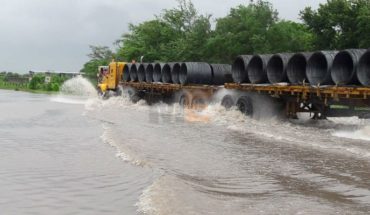Samsung’s global corporate citizenship program, Solve For Tomorow (SFT), celebrates 10 years in Latin America. To commemorate the date, Samsung brought together students and teachers participating in past editions from different countries in the region, representatives of governments in the area of education, social entities and business executives at an event in Bogota, Colombia. Photo: Marco OviedoThe meeting featured cultural activities, panels on Solve for Tomorrow and its impact on Latin America, and real stories of some participants, such as 26-year-old Argentinian Valentina Avetta. In 2016, as a student, she was using insulin to treat diabetes, when she decided to develop a thermochromic sensor to detect the loss of the cold chain of biosynthetic insulin, essential to maintain the efficacy of the drug, which cannot exceed 30 degrees when opened. Valentina won the program with her project, which became her thesis at the Faculty of Engineering.Photo: Marco Oviedo “With a presence in 20 countries in Latin America, Samsung’s mission has been to empower the next generation of leaders and problem solvers, who are, without a doubt, a catalytic force for a brighter and more equitable future for all,” highlights Mario Laffitte, Vice President of Institutional Relations at Samsung Latin America.Photo: Marco OviedoOver the years, Solve for Tomorrow has impacted the lives of thousands of young Latin Americans in a transformative way. More than 311,000 students had the opportunity to create projects with the potential to impact their communities, with the support of more than 41,000 teachers, in more than 22,000 public schools in the region. Photo: Marco OviedoThe finalist projects of the 10th edition presented innovative solutions to problems related to the care of the environment and social inclusion in their communities. The selected proposals were:Innovate an inclusive society (Argentina)This team of Missions seeks to solve the lack of inclusion of people with functional diversity in the educational field. To do this, they devised a website that will work as a support for teaching students with disabilities and advising teachers on how to approach the content. This solution includes tools such as a Braille-adapted keyboard, voice guidance for the visually impaired, colors adapted to color blindness, among others. NeoLimb Prosthetic Hand (Paraguay)From Central Paraguay, young people addressed the economic inaccessibility of prosthetic hands in the market due to the lack of innovation and cost structure in this industry. To solve this, they created an open-source 3D mechanical prosthesis, which aspires to merge functionality, affordability and aesthetics. Users will be able to assemble the prosthesis independently at home, taking advantage of 3D printing technology, without requiring specialized technical skills. Cyanobacteria Project (Uruguay)Students from Colonia, Uruguay presented a solution to eliminate cyanobacteria in the water that cause diseases and impact tourism, fishing activity and aquatic animals in the city of Carmelo. Their project consists of creating a device for filtering and accumulating cyanobacteria, which will then be used to produce biofuel from the biomass obtained. CitySensor (Argentina)The team, from the City of Buenos Aires, took on the problem of air pollution that people breathe and the diseases it causes. Their project consists of a website that informs citizens about air quality in different parts of the city. The information is measured in real time by strategically placed sensors, which are powered by solar panels. In this way, the population will be able to access an interactive map in real time and make decisions on how to move around the city in a safe and healthy way. NitrateZero (Argentina)The presence of nitrate ions in drinking water is a growing global problem, and the main removal techniques have a number of disadvantages, such as high salinity. Faced with this problem, the Buenos Aires team found alternatives for the elimination of nitrates in drinking water that meet the conditions of being simple, economical and harmless to the environment. The solution is to create a device for the removal of nitrates from the interaction with yeasts, thus eliminating chemical processes and facilitating access to drinking water. These five teams, which made their way through more than 1030 projects, are now in the spotlight.Bootcamp, where they will deepen the development of their projects in a series of training and in the assembly of their presentation pitch for the grand finale. The meetings will take place from October 30 to November 13 virtually and will end with a face-to-face meeting in which the finalists will share 2 days in Buenos Aires. On November 14, the grand finale will be held in person, where the teams will present themselves to the jury to present their projects. Photo: Marco OviedoMore than 2000 high school students came together to address the problems of their communities, demonstrating a commitment to the environment, education, health and social inclusion. These finalists are a testament to the power of creativity and innovation in the hands of the next generation. Every idea, every project, and every effort throughout the program contributes to positive change. In this way, Samsung continues to empower new generations to build a better future.
The 5 finalist projects of Solve for Tomorrow, Samsung’s educational program
November 7, 2023 |





